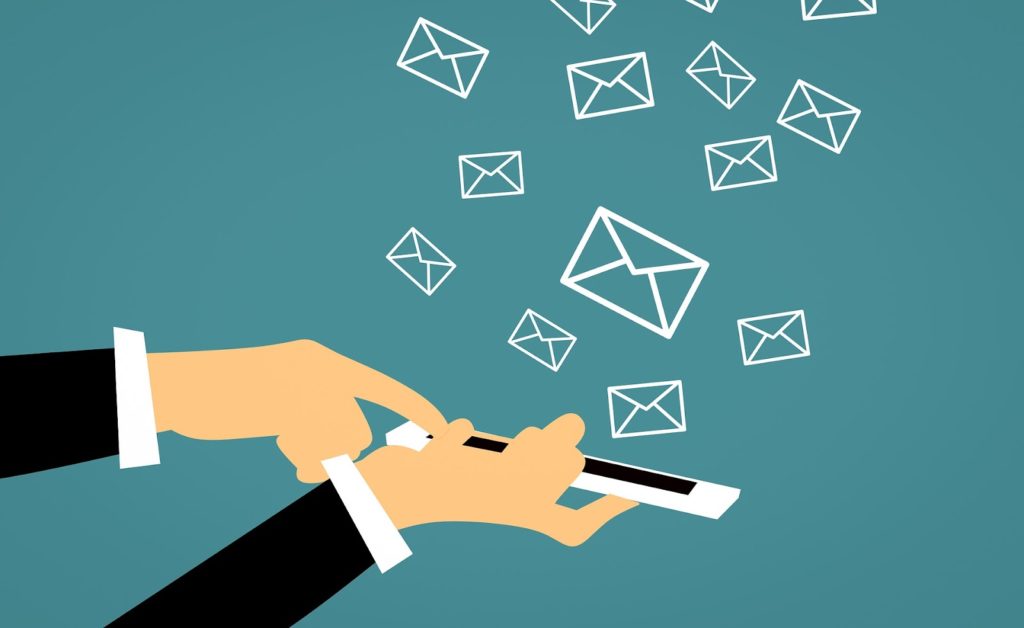
Source: Pixabay
Let’s face it; people don’t open every email they receive. Your organization might send out many emails to many subscribed recipients, but you still notice a low conversion rate. Why is this the case? One word: Graymail.
More often than not, people delete emails without even opening them. That’s graymail in a nutshell, and it’s deadly. Specifically, it can seriously affect your company’s email marketing efforts. Not to fear, as you can still work around this issue.
In this article, I’ll explain what graymail is and how it differs from spam. I’ll also go over how it works and how you can prevent it from occurring. Let’s get started.
What Is Graymail?
Graymail refers to any email that your customers opted to receive but is no longer relevant to them. So, they simply don’t open those emails.
Here’s a simple example. Let’s say you run a small business. During checkout, you ask your customers to fill out a form asking them if they want to receive offers and discounts in the future. Naturally, some customers fill out the form without much thought or hesitation.
Based on this positive response, you decide to create an email marketing campaign and start sending out those offers and discounts via email. Soon after, however, your analytics show that the open rate for those emails is quite low. And you quickly realize your email marketing campaign hasn’t translated to increased sales for your business.
This result indicates that your emails either go to your customers’ spam folder or are no longer relevant for them. Emails that fall in the latter category are graymail.
Clearly, it can be very easy to confuse graymail with spam. So, before continuing further, let’s talk about the differences between the two.
The Difference between Spam and Graymail
In essence, spam and graymail both refer to bulk email messages sent out to a database of email IDs. But this is where the similarities end.

Source: geralt on Pixabay
Here’s a simple table showcasing the differences between the two across several aspects.
| Spam | Graymail | |
| Has an explicit sign-up process | No | Yes, though sometimes it’s indirect |
| Contains legitimate and valid information | Not always | Always |
| Is easy to unsubscribe from | No | Yes |
| Adds value to recipients | No | Yes |
As you can see, a key difference between the two is that customers receive spam emails in an unsolicited manner. Spam appears regardless of any sign-up process. On the other hand, customers might directly or indirectly have opted to receive graymail, which makes those emails solicited.
And how can you indirectly opt to receive graymail? Let’s say you took a specific action on a website, such as purchasing an item. As a result, this action might land you on the organization’s mailing list in an indirect manner.
Furthermore, users may also receive emails from third-party affiliates. For example, if you sign up to receive information from one organization, you’re also signing up to receive emails from their affiliates and partners.
Lastly, graymail is legitimate and valid and isn’t used as a vehicle for phishing or malware attacks. You can also unsubscribe from it at any time through a simple process. None of these points apply to spam emails.
Now that you know the differences between the two, let’s look at how graymail works.
How Does Graymail Work?
In short, Internet Service Providers (ISPs) use artificial intelligence (AI) and machine learning (ML) to track a user’s level of engagement with bulk emails. If a user doesn’t regularly interact with some emails, those emails turn into graymail. For example, Gmail moves those emails to a tab called “Promotions” in your inboxes. As you might guess, most users never navigate to this tab.
As an organization, you don’t want your emails to end up in an obscure tab or folder in a user’s inbox. Ideally, you want your users to actively engage with your emails. In the next section, I’ll talk about how you can prevent your emails from turning into graymail.
4 Ways to Prevent Your Emails from Turning into Graymail
Your emails can turn into graymail due to one of the following reasons:
- Irrelevant content
- Unappealing content and layout
- High frequency
- Low engagement interactions (a call-to-action (CTA), for example)
These reasons clearly show that it can be up to you to ensure that your users open your emails. Here are some best practices you can implement in your email marketing campaigns.
1. Start with an Engaging Tagline
You must engage with your customers regularly to prevent ISPs and email providers from moving your email to unused folders. To do that, you should start with an engaging and compelling tagline. In turn, this will encourage your users to open your email and see what’s inside.
2. Create Relevant Content
Make sure your newsletters and emails contain relevant content for your recipients. They must contain information that will interest them, such as the latest industry trends, interesting blogs, etc. In short, anything that can add value to your recipients is a must. Never focus on just promoting your business or products.

Source: mohamed_hassan on Pixabay
3. Take Advantage of Segmentation
Use behavior-based segmentation to focus on creating and sending value-added content to users who engage with you. For the users who don’t engage with you, consider creating a new email marketing campaign to boost their overall engagement levels.
4. Tap Into Third-Party Tools
Consider using third-party tools like EasySendy and ProofPoint Email Security to understand why your emails have turned into graymail. Accordingly, you can use this information to come up with solutions to create new emails that will engage your users.
And there you have it! Let’s summarize everything you’ve learned so far.
The Bottom Line
In essence, graymail refers to any email that a recipient subscribes for but doesn’t open because of irrelevancy. This is different from spam, as spam emails tend to just appear in a user’s inbox whether or not they subscribed to them.
From an organization’s perspective, graymail can seriously hinder your email marketing efforts. You can utilize best practices in your email marketing campaigns, such as creating engaging taglines to entice your users to open your email. You can find more best practices in the article itself.
I hope this article gave you some insights into what graymail is. I also hope that the information comes in handy when creating and implementing effective and successful email marketing campaigns.
Do you have more questions about graymail? Check out the FAQ and Resources sections below!
FAQ
Can I suppress graymail?
Yes, some tools like HubSpot can help you out with that. Essentially, these tools remove the users who aren’t engaging with your marketing emails. As a result, you can get a clear picture of open and click rates. In turn, this can help you to better plan your marketing campaign.
How can I avoid my email from turning into graymail?
As an email marketer, you must provide informative and engaging content through emails. Make sure to have an interesting subject line that will entice your recipients to open your email. Maintaining regular user engagement will also prevent your email from turning into graymail.
Are graymail and spam the same?
No. Graymail refers to solicited emails, while spam refers to unsolicited emails. Also, graymail is never used as a vehicle for cyberattacks such as malware. On the other hand, cyberattackers can use spam emails to hide phishing attacks within them. Additionally, a user can easily unsubscribe from graymail when compared to spam.
How are my users avoiding graymail?
It’s tough for recipients to “avoid” graymail as they’ve explicitly opted to receive them. The easiest way is for them to unsubscribe from an organization’s mailing list. As an organization, you should focus on creating value-added content, so your email doesn’t transform into graymail.
Can graymail impact my email marketing campaign?
Yes, graymail can impact your email marketing campaign results. Because your emails are going to users who aren’t actively engaging with them, your open rates will be very low. Also, you won’t get an accurate idea of the success of your campaigns.
Resources
TechGenix: Article on Email Hacking
Learn more about email hacking and how to recover a hacked email.
TechGenix: Article on the Top Cloud Email Backup Solutions
Educate yourself on the top cloud email backup solutions in 2022.
TechGenix: Article on Email Security and Compliance
Read more about the importance of email security and compliance for your business.
TechGenix: Article on Email Security Best Practices
Find out more information about email security best practices for SMBs and email security providers.
TechGenix: Article on Email Usage
Discover if business emails are currently dying or evolving.



